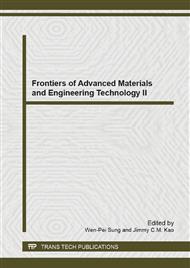p.1517
p.1521
p.1525
p.1529
p.1534
p.1538
p.1544
p.1548
p.1552
Seismic Response Analysis of Twin-Tower Building with Enlarged Base
Abstract:
This paper adopts large finite element software ANSYS to establish finite element model of twin-tower building with enlarged base, uses dynamic time history analysis method for seismic response calculation, compare and analyze the calculation results of twin-tower building with enlarged base under elastic boundary conditions and rigid boundary conditions. The results showe that dynamic response for model under elastic boundary conditions is larger than dynamic response for model under rigid boundary conditions, and elastic boundary conditions is more close to the actual situation.
Info:
Periodical:
Pages:
1534-1537
Citation:
Online since:
April 2014
Authors:
Keywords:
Price:
Сopyright:
© 2014 Trans Tech Publications Ltd. All Rights Reserved
Share:
Citation:


